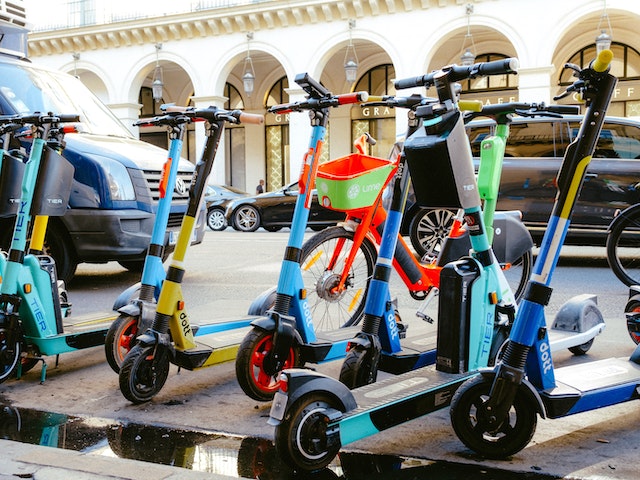
Introduction
In an ever-evolving world where sustainable transportation solutions are gaining increasing prominence, electric scooter have emerged as a revolutionary mode of urban mobility. Offering an eco-friendly and efficient way to navigate through bustling city streets, these compact and stylish vehicles are changing the way people commute and explore their surroundings. In this blog, we will delve into the various aspects of electric scooters, exploring their benefits, technology, impact on the environment, and their potential to shape the future of transportation.
- What are Electric Scooters?
Electric scooters, commonly known as e-scooters, are battery-powered personal transportation devices designed for short-distance travel. They resemble traditional kick scooters but come equipped with an electric motor, rechargeable batteries, and an intuitive control mechanism. With a typical range of 15 to 30 miles per charge and a top speed of 15 to 25 miles per hour, e-scooters are ideal for short commutes and last-mile connectivity.
- The Advantages of Electric Scooters
2.1. Eco-Friendly Commuting
One of the most significant advantages of electric scooters is their positive impact on the environment. Unlike conventional gasoline-powered vehicles, e-scooters produce zero tailpipe emissions, reducing air pollution and contributing to cleaner and greener cities.
2.2. Cost-Effective Transportation
Electric scooters are not only environmentally friendly but also cost-effective. Their operating costs are significantly lower than traditional vehicles since they require less maintenance, no gasoline, and often have longer lifespans.
2.3. Convenient and Portable
E-scooters are lightweight and foldable, making them highly convenient for urban commuters. They can be easily carried onto public transport, stowed in small spaces, and are ideal for navigating through congested traffic.
2.4. Health Benefits
Riding an electric scooter can provide health benefits by promoting physical activity and reducing sedentary behaviors. Even though they have electric motors, riders can still choose to kick-push the scooter, engaging in low-impact exercise.
- Technology and Innovation
3.1. Battery Technology
The heart of an electric scooter lies in its battery. Advances in battery technology have significantly improved the performance and range of e-scooters. Lithium-ion batteries are commonly used, providing a good balance between energy density, weight, and charging efficiency.
3.2. Smart Features
Modern electric scooters often come equipped with smart features like smartphone connectivity, GPS tracking, and app integration. These features enhance the overall user experience, allowing riders to access real-time information, lock/unlock the scooter remotely, and receive updates on battery life and potential maintenance needs.
3.3. Regenerative Braking
Some e-scooters utilize regenerative braking technology, which converts kinetic energy into electrical energy during braking. This feature helps to recharge the battery while reducing wear on the braking system.
- Safety and Regulations
4.1. Rider Safety
Safety is a paramount concern when it comes to electric scooters. Riders should wear helmets, follow traffic rules, and ride in designated lanes or bike paths when available. It is crucial to be aware of pedestrians and other vehicles to avoid accidents.
4.2. City Regulations
The rapid rise of electric scooters has prompted many cities to implement specific regulations to ensure their safe and responsible use. These regulations may include speed limits, parking restrictions, and guidelines for scooter-sharing companies to maintain order and prevent clutter on sidewalks.
- The Impact on Urban Transportation
5.1. Last-Mile Connectivity
Electric scooters play a vital role in solving the last-mile connectivity problem in urban areas. They offer a convenient option for people to cover short distances between public transportation stops and their final destinations.
5.2. Reducing Traffic Congestion
By encouraging more people to use electric scooters, cities can reduce the number of single-occupancy vehicles on the road. This, in turn, can alleviate traffic congestion and promote smoother traffic flow.
Conclusion
Electric scooters have swiftly become a popular choice for urban transportation due to their eco-friendliness, cost-effectiveness, and convenience. As technology continues to advance and city infrastructure adapts to accommodate these vehicles, electric scooters are likely to play an increasingly prominent role in shaping the future of urban mobility. Embracing these sustainable solutions can help create greener and more livable cities for generations to come.




